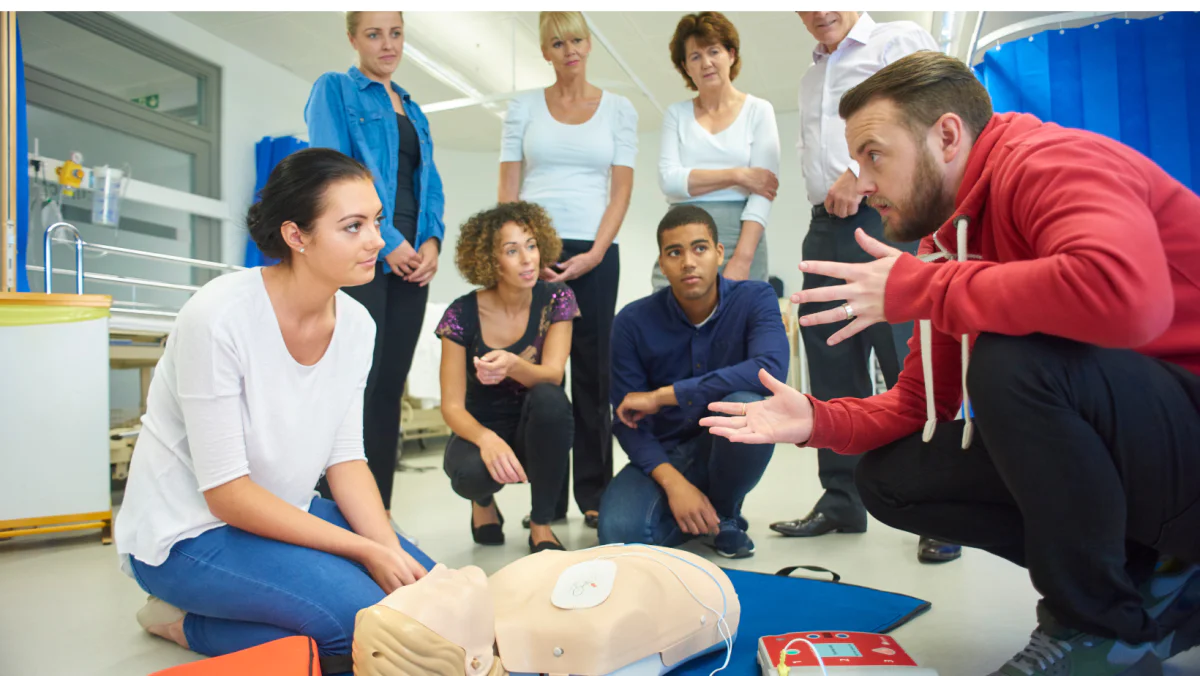New first aid regulations take effect in B.C.: What employers need to know

Authors: John Agioritis, Katelyn Jones, Mariana Olivo de Cerqueira
Amendments to British Columbia’s Occupational Health and Safety (OHS) Regulation respecting the provision of first aid came into effect for workplaces across the province on November 1, 2024.
The provision of first aid services appropriate to the workplace is a basic responsibility of all employers operating within B.C. To ensure B.C. regulations for workplace first aid meet national standards established by the Canadian Standards Association (CSA), WorkSafeBC deemed certain amendments to OHS Regulations necessary. The amendments also aim to strengthen existing OHS Regulations by providing more comprehensive emergency response requirements.
This blog addresses key amendments to B.C.’s OHS Regulations for first aid provision to ensure employer understanding and compliance.
Key changes to first aid regulations
1. New “First Aid Assessment”
Employers must conduct a two-part assessment for each workplace to determine the appropriate level of first aid resources. This assessment considers factors such as the number of employees, workplace hazard ratings and accessibility for emergency medical responders. The findings will inform first aid provisions tailored to each work environment.
Less-accessible workplaces are addressed, including remote work locations. In these situations, employers are required to implement additional measures to ensure that injured workers can receive timely medical attention, including developing plans for safe transport to accessible areas, and increasing first aid resources, as necessary.
For more information on this change, see Sections 3.16(2), 3.16(3.1) and Schedule 3-A.
2. Certification levels and kits
Through the standardization of certification levels and first aid kit requirements, B.C. certification levels and kits are now aligned with CSA standards, making it easier for employers to meet nationally recognized benchmarks.
The traditional Level 1, 2 and 3 certifications and kits have been reclassified as Basic, Intermediate and Advanced. Notably, training time for the Intermediate certification has been reduced from five days to two days. WorkSafeBC will accept existing Level 1, 2 and 3 certifications as equivalent to the new Basic, Intermediate and Advanced certifications until their expiry, with a maximum grace period extending to November 1, 2027.
For more information on this change, see Section 3.16(1) and Schedule 3-A.
3. Annual drills and updated first aid procedures
Employers are now required to conduct first aid drills annually or whenever there are significant changes to first aid procedures. These drills will ensure that all staff are familiar with procedures and that first aid measures are effective and up-to-date.
For more information on this change, see Section 3.17(4).
4. Additional training for transportation
More first aid attendants may need to complete a new, one-day transportation endorsement course to comply with the new regulations. This course aims to equip attendants with the skills needed for safe and efficient emergency transport of injured employees.
For more information on this change, see Section 3.17(3) and Schedule 3-A.
5. Emergency transport options
The new regulations provide employers more flexibility in choosing the most appropriate emergency transport options for their workplace. Employers can now select the type of vehicle best suited to their specific conditions, such as those required for challenging terrain or unique transportation needs.
Such vehicles must, however, meet specific criteria, including the ability to safely transport injured workers by stretcher, maintain effective communication between first aid attendant(s) and the vehicle operator, and protect injured workers from weather, excessive jarring and other hazards.
For more information on this change, see Schedule 3-A.
Steps for compliance
To comply with the new first aid regulations, B.C. employers should:
- Conduct and document a workplace-specific first aid assessment.
- Schedule and conduct annual drills and review first aid procedures regularly.
- Plan for certification updates, transitioning current certifications to the new classifications.
- Assess emergency transport options to align with updated guidelines.
B.C. employers should review their workplace first aid provisions in light of these recent regulatory amendments. The duty to undertake a “First Aid Assessment” is a particularly specific task impacting all employers which should be addressed to ensure compliance with the OHS Regulations.
If you or your business have questions regarding compliance with workplace health and safety laws, please do not hesitate to contact a member of our Occupational Health and Safety team.
Note: This article is of a general nature only and is not exhaustive of all possible legal rights or remedies. In addition, laws may change over time and should be interpreted only in the context of particular circumstances such that these materials are not intended to be relied upon or taken as legal advice or opinion. Readers should consult a legal professional for specific advice in any particular situation.




